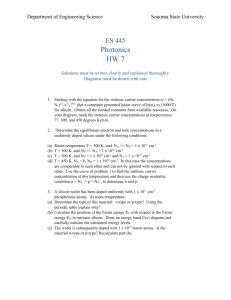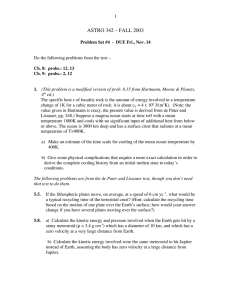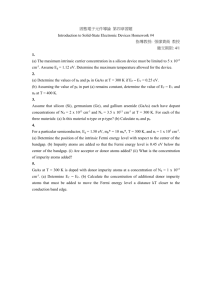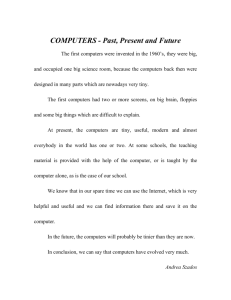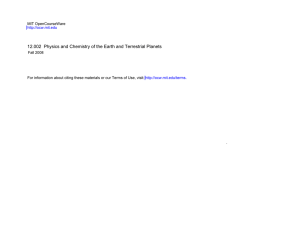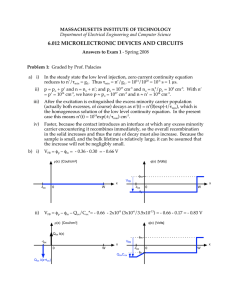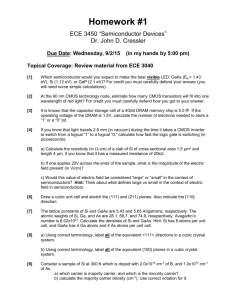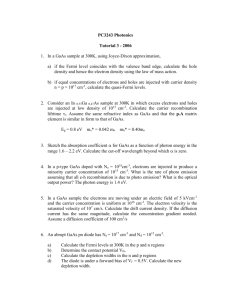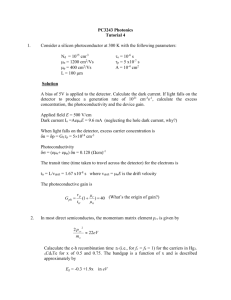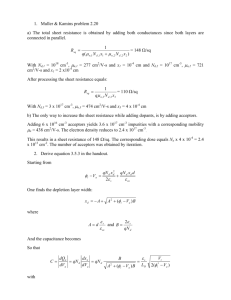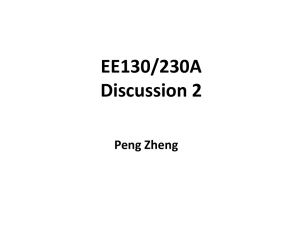ppt
advertisement
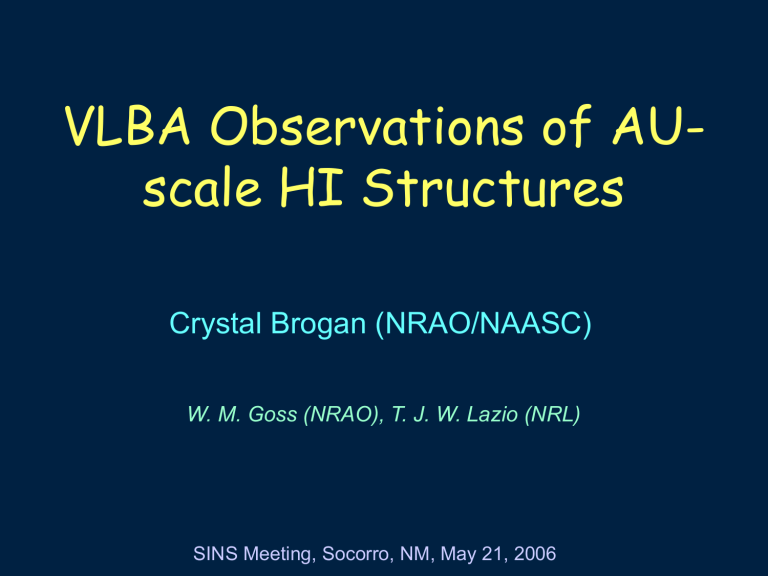
VLBA Observations of AUscale HI Structures Crystal Brogan (NRAO/NAASC) W. M. Goss (NRAO), T. J. W. Lazio (NRL) SINS Meeting, Socorro, NM, May 21, 2006 Probing Galactic HI through Absorption Local bubble ~100 pc Cold HI scale height (2z) ~200 pc ~500 pc G187.4-11.3 First Evidence for Small HI Structures Hat Creek – Owens Valley interferometer with a fringe spacing of 0.09” Dieter, Welch, & Romney (1976) 3C147 Comparison of averages of “early” and “late” hour angles in two epochs Changing HI spectrum with hour angle indicates structure Evidence for structures with size 3 x 10-4 pc (70 AU) Under Pressure…. What is measured: columnof density/spin temperature) • WhatN(HI)/Ts is the(HI nature the TSAS? and the size scale L • How long does it live? Typical Tiny HI: - N(HI)/Ts ~ 1 x 1019 cm-2 * K • How common is it? - size scale of tiny HI ~ 50 AU deviation Dt ~ 0.5 • Is- maximum it really a “structure” or just a - spin temperature Ts ~ 50 K statistical phenomenon? Density of tiny n(HI) ~ 3 x Pressure of tiny HI P/k ~ Typical ISM - n ~ 50 cm-3 - P/k ~ 10(3-4) cm-3 K 105 107 cm-3 cm-3 K Solutions: - Skinny (Heiles 1997) - Cold (Heiles 1997) - Temporary (Jenkins 2004) - Statistical (Deshpande 2000) Quest for Better S/N Lovell, Effelsberg, & Westerbork VLBI with a resolution of 0.05” Diamond et al. (1989) Evidence for structures with size ~25 AU and density 105 cm-3 First Imaging of Small Scale HI MERLIN + EVN with a resolution of 0.1” Davis, Diamond & Goss (1996) Evidence for structures with size ~70 AU and density 104 cm-3 Imaging with the VLBA (i.e. Epoch I) Faison et al. (1998, 2001) 0404+786 (10 mas) 3C138 (20 mas) Multi-epoch VLBA Study Toward 3c138 Average 2002 HI optical depth Epochs: 1995, 1999, 2002 Resolution: 20 mas = 10AU at 500 pc Superior dynamic range to any previous study First attempt to study variabilty Difference 2002 -1999 Position-Velocity Diagram Cross-Cuts Shaded lines are ± 1σ Apparent sizescale of features is 50mas or ~ 25 AU Epoch to Epoch Opacity Changes Percentage of “Significantly” Deviant Pixels Dt 5σ =5% Dt 5σ =7% At typical ISM densities of ~50 cm-3 all of the observed HI column would fit into a cloud only 3.5 pc in diameter The filling factor of the CNM itself is low (<1% in this direction) Thus the filling factor of TSAS must be < 0.1% Dt 5σ =11% Dt 5σ =10% Could Optical Depth Changes be Due to a Change in Temperature? Difference Arecibo (Heiles & Troland 2003) 2002 -1999 effective resolution ~800 mas For a temperature drop from 50 K to 15 K the line width should decrease by ~0.7 km/s! Is the Line of Sight to 3C 138 Special? VLBA HI Absorption Measurements toward Quasars If the typical scale size of tiny scale HI is ~50mas, and the “covering fraction” is low, then the best chance of seeing it is toward a large source Pulsar Observation Simulation x x Probability of landing on variation with a 1-D sampling method is very low Dt from 120 simulated pulsar observations with epochs separated by 50 mas = typical size of HI variations What about Those Magnetic Fields? MHD waves likely mediate magnetic field/turbulent pressure Zeeman effect Blos 3σ upper limits: balance Blos < 45 mG/pixel MHD waves with frequencies larger than the ion-neutral collision Bloscannot < 20 mGpropagate: for average frequency Consistent with Heiles & Troland For a parent cloud withArecibo detection of 5.6 ± 1.0 mG What does it mean? size ~ 3.5 pc Assume magneticionization and turbulent pressures fraction 10-4 equal: 0.5 B = 0.4 Dv where is the non-thermal linewidth NTn Alfven speed = Dv 2.1NTkm/s For n=50 cm-3 and DvNT =2.1 km/s; B = 6 mG the cutoff wavelength is on the order of 10AU For n=105 cm-3 and DvNT =2.1 km/s; B = 266 mG Simulations are needed…. Magnetic and turbulent pressures do not appear to be in equilibrium Given flux freezing, how can density change by 103 and not produce appreciable increase in B? Preliminary Results for 3C 147 D= 100 – 1000 pc G161.7+10.3 10mas ~ 5 AU at 500 pc S/N of Deviation Special thanks to E. Fomalont, V. Dhawan, C. Walker Summary of VLBA Tiny HI Results Distinct structures with typical sizes of ~25AU are observed • •What is the nature of the TSAS? significant changes on few year timescales are observed • How long does it live? •The line widths of these features rule out the significantly cooler gas scenario •The covering fraction of these features is only about 10% • How common is it? • The filling factor is very tiny < 0.1% magnetic fields of these features are not significantly • •The Is it really a “structure” or just a enhanced statistical phenomenon? • Perhaps MHD waves can’t propagate? These features are sufficiently rare that the probability of observing them is low unless the search region is large • Could explain the low rate of return from pulsar observations and small quasars

